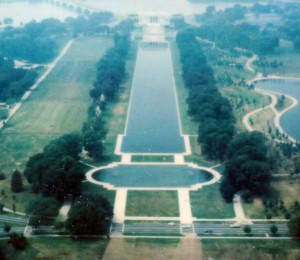So far, this issue is going much better than the previous one. Let’s see if I can keep up this momentum.
A couple of times in my life I have traveled somewhere just in time for something interesting to happen. The most notable of these was my family’s trip to the UK. I had breast cancer in 2001 (it’ll be 15 years this October and I haven’t seen any sign of it since then, so I’m pretty sure I’ll be okay at this point) and decided that I wasn’t going to die without ever having been to the UK, so we made our plans. As we finished the plans, we realized that we’d be there just in time for the Queen’s Golden Jubliee celebrations. We also were in London on June 7, which was the day of the World Cup match between England and Argentina, a match that England was apparently expected to lose, but which it won.
How does this tie into my National Geographic project? For 2016, National Geographic is doing a series on the National Park Service in honor of the Park Service’s centennial. I didn’t even know that 2016 was going to be the centennial for the National Park Service when I planned a three-national-parks-and-a-national-forest trip which includes the oldest National Park, Yellowstone. This was a complete coincidence.
How National Parks Tell Our Story — And Show Who We Are, by David Quammen, photographs by Stephen Wilkes.
Just like it says on the label, this article goes into the history of the National Park Service and tells how they decided on a single vision for national parks. The photographs in this one are awesome, even for National Geographic photos. Wilkes set his camera up at an elevation and took thousands of pictures of parks (Yosemite, Yellowstone, the Grand Canyon, and West Potomac Park) over one day. Then he pasted them together into panoramas showing the vantage point through the night and the daytime.
This Is Your Brain on Nature, by Florence Williams, photographs by Lucas Foglia
This is Your Brain on Nature is about the health benefits of getting out and getting some “green time.” Williams even goes so far as to say that people may have lower incidences of physical ailments if they live within half a mile of green space. On the other hand, there is the “urban advantage,” where people who live in cities tend to have have longer, healthier lives than those in rural or suburban areas. Some of the “urban advantage” probably comes from access to health care, and others come from being able to walk to destinations rather than having to travel in a car to get there. I wonder, too, if the presence of urban parks makes a difference.

